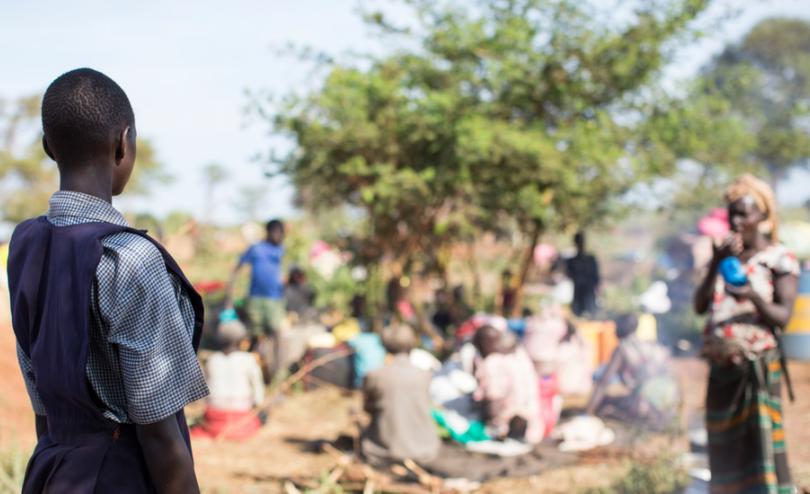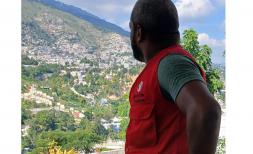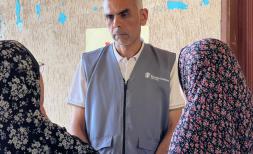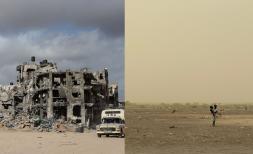Time to deliver on our promise of support

Co-written by: Brechtje Vanlith, Country Director in Save the Children Uganda
A combination of conflict, drought and famine is driving people in the world’s newest nation, South Sudan, into neighbouring countries in record numbers.
With more than 1.8 million refugees – including one million children – fleeing for safety to Uganda, Sudan, Ethiopia, Kenya, Democratic Republic of the Congo and Central African Republic, the crisis in South Sudan is now the world’s largest fastest growing refugee situation.
Fleeing an attack on the town of Pajok in South Sudan in April, Auma Lucy Yubuan escaped and walked for two days, eventually arriving in Uganda.
I am so happy…my children are alive
“The soldiers were looting, breaking doors and beating people. They would arrest you and ask you to show them where the rebels are. But when you tell them you don’t know, they beat you. They killed people,” she told UNHCR.
“I am so happy even though I have nothing to eat and I have lost everything, my children are alive. I was so scared I didn’t know if I would see them again,” Yubuan added.
Uganda now hosts more than 900,000 South Sudanese refugees with on average 2,400 new refugees like Yubuan and her children arriving every day. Already home to 400,000 refugees from Burundi and DR Congo, Uganda is now the third-ranked refugee-hosting country in the world, providing a new home to almost one and a half million refugees, 85 percent of who are women and children.
A beacon of hope
In a world where many countries are closing their doors to those in need Uganda stands out for pioneering a very different approach.
Uganda’s refugee policy is lauded as one of the most generous in the world and has many impressive aspects. Uganda allows refugees, irrespective of nationality or ethnic affiliation access to its territory and grants them freedom of movement, land to settle and cultivate, the right to seek employment and establish businesses and access to public services including health and education as well as vital travel, identity and other documents.
A shared responsibility
In recognition of the urgent need for new ways of responding to mass displacement the UN General Assembly last year called on countries to implement Comprehensive Refugee Response Frameworks (CRRF). Uganda with its combination of progressive policies and practical action agreed to pilot the CRRF.
In recognition of the critical role that developing countries like Uganda play in hosting refugees on behalf of the international community, a comprehensive refugee response must also involve sufficient practical support for the host country. Developing countries like Uganda host 86 percent of the world’s refugees and understandably struggle to meet the needs of large numbers of traumatised new arrivals.

Photo Credit: UNHCR/Rocco Nuri
Progress and achievements at risk
But a lack of predictable development and humanitarian funding to respond to a displacement crisis of this magnitude now risks unravelling all of Uganda’s good work to date.
With half of 2017 already gone the UN led emergency response plan for Uganda has received less than fifteen percent of the amount requested.
Uganda, its communities that are sharing their limited resources with refugees and the refugees themselves all deserve better than this.
An opportunity to stand in solidarity with Uganda
If well supported, Uganda can become a model for how sustainable and inclusive investments in social services and in human capital among refugees can help break the cycle of conflict and build peaceful communities, but the country urgently needs support.
Donor governments, development banks and the private sector will have a unique opportunity to provide that support at a Solidarity Summit that Uganda is convening in late June.
The ability of the Summit to secure significant new is a critical test of the UN’s promise to deliver the support that communities and countries which extend a welcome to refugees require.
We need to do everything we can to keep that promise, both to Uganda, but to the other countries around the world who are providing a safe haven and a new home to the world’s most vulnerable women and children.
Photo Credit Lead: UNHCR/Jiro Ose







